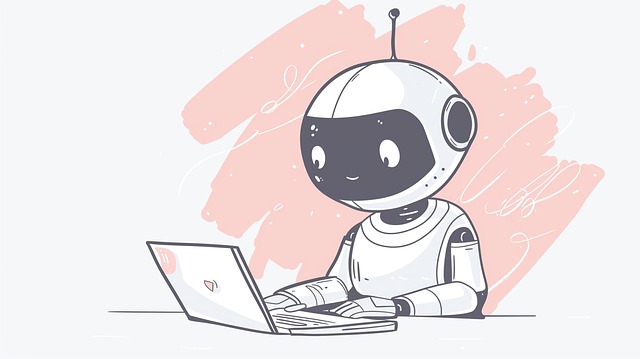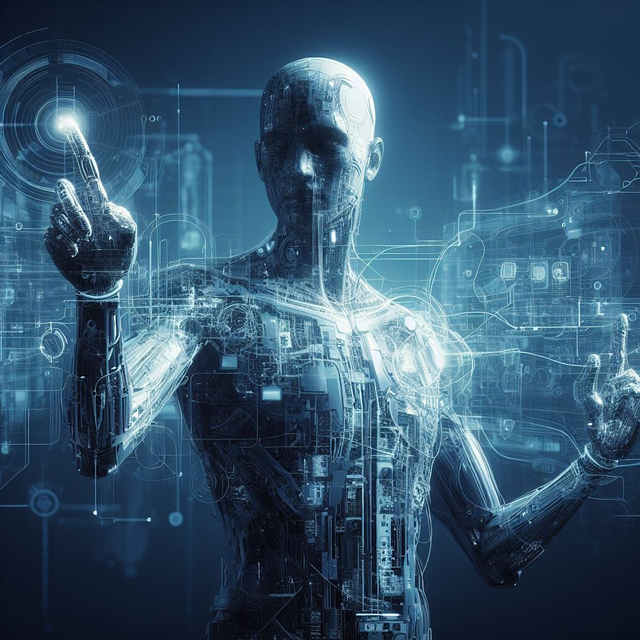AI chatbots, powered by NLP and ML, revolutionize customer service with 24/7 availability, instant responses, and personalized assistance across diverse sectors. They continuously learn from user interactions, adapt to new information, and handle high volumes of queries efficiently. Key benefits include reduced wait times, tailored solutions, and cost savings for organizations. However, challenges like context understanding, data biases, and privacy concerns require addressing for widespread adoption.
“AI chatbots are transforming digital interactions, offering sophisticated conversational interfaces powered by artificial intelligence. In this comprehensive guide, we demystify these innovative tools, breaking down their core components and functionality. From understanding their basic architecture to exploring the vast array of benefits they offer across industries, we delve into the technology driving AI chatbots and the challenges they face. Get ready to navigate the exciting landscape of AI-driven communication.”
- Understanding AI Chatbots: A Basic Breakdown
- How Do AI Chatbots Work? The Technology Behind Them
- Benefits and Applications of AI Chatbots
- Challenges and Limitations: What to Expect from AI Chatbots
Understanding AI Chatbots: A Basic Breakdown

AI chatbots are a type of artificial intelligence designed to engage in conversational interactions with users, mimicking human-like communication. They utilise advanced natural language processing (NLP) algorithms to understand and interpret user inputs, enabling them to provide relevant and contextually appropriate responses. These chatbots can be integrated into various platforms, from messaging apps to websites, offering 24/7 assistance and support to a wide range of users.
At their core, AI chatbots operate through machine learning models that learn from vast datasets, allowing them to evolve and improve over time. As users interact with the chatbot, its algorithms analyse patterns, context, and sentiment to deliver more accurate and personalised responses. This technology has revolutionized customer service, making interactions faster, more efficient, and often more enjoyable for both parties involved.
How Do AI Chatbots Work? The Technology Behind Them

AI chatbots work through a combination of advanced technologies, primarily natural language processing (NLP) and machine learning (ML). These tools enable chatbots to understand human language, interpret user queries, and generate contextually appropriate responses. At their core, AI chatbots are trained on vast datasets that include text conversations and online interactions. Using ML algorithms, they learn patterns, gain knowledge, and improve their response accuracy over time.
The technology behind AI chatbots involves complex algorithms designed to mimic human-like conversation. These algorithms process user inputs, break them down into components, analyze intent, and retrieve relevant information from their databases. Once the chatbot understands the user’s request, it generates a response, often using text-to-speech conversion for vocal interactions. This continuous learning and adaptation make AI chatbots versatile tools capable of handling various tasks, from answering simple questions to providing complex customer support.
Benefits and Applications of AI Chatbots

AI chatbots are transforming the way we interact with technology, offering a wide range of benefits across various sectors. One of their primary advantages is 24/7 availability and instant response times, enhancing customer service experiences. These chatbots can handle a high volume of queries simultaneously, reducing wait times for users and allowing businesses to manage increased demand efficiently. They are also highly versatile in application; from handling simple questions and providing product recommendations to offering personalized assistance in healthcare and finance.
Furthermore, AI chatbots learn and adapt over time, leveraging machine learning algorithms to improve their accuracy and understanding of user needs. This capability enables them to provide more tailored solutions and create a seamless, human-like conversational experience. Their ability to process vast amounts of data quickly makes them invaluable for tasks like automated lead generation, customer support, and even creative content generation, ultimately driving efficiency and cost savings for organizations implementing this technology.
Challenges and Limitations: What to Expect from AI Chatbots

AI chatbots have made significant strides in recent years, but they’re not perfect. While they can handle a wide range of tasks, from answering simple questions to engaging in basic conversations, there are still several challenges and limitations to keep in mind. One of the primary issues is context understanding—chatbots often struggle to maintain coherence over lengthy interactions, potentially leading to confusion or irrelevant responses.
Another significant challenge is the reliance on data. AI chatbots learn from vast datasets, but this means they can only perform as well as the data they’ve been trained on. Biases and inaccuracies present in the training data can be reflected in the chatbot’s outputs, leading to potentially inappropriate or misleading responses. Additionally, privacy concerns arise due to the sensitive information chatbots may process during interactions, highlighting the need for robust security measures.
AI chatbots are transforming the way we interact with technology, offering a multitude of benefits across various sectors. From enhancing customer service to revolutionizing information access, their capabilities are vast and continually evolving. However, it’s crucial to recognize the current limitations and challenges, such as data privacy concerns and the need for improved contextual understanding. As AI chatbots become more integrated into our lives, ongoing development and responsible implementation will be key to unlocking their full potential while mitigating risks.
